The First M. E. Church - Page 32As early as 1827, soon after Mr. Comstock had platted the village of Logan, now city of Adrian, the Rev. John Jones, a Methodist circuit rider, came to the log cabin of Noah Norton and preached the first sermon in the new settlement. Nothing important of a religious nature occurred again in the village until 1830. That year the Rev. Jacob Hill, also a Methodist, in charge of the Monroe Circuit, came occasionally. As a result of his coming the first church of any sect was organized that year, with five members. Mr. and Mrs. William Barrus, Mr. and Mrs. John Walworth, and Americus Smith. Mr. Smith was a local preacher, and keeping up that interest that summer, seven additional members were added. They were Milton and Louise Foote, Pharez and Hannah Sutton, Samuel and Ada Gregory, and Altha Sphink. In September, 1830, Adrian was put down on the plan of the Monroe Circuit as a week-night appointment. James W. Finley was put in charge, and he came once a month to preach in some private house. The first "Sunday preaching" commenced in 1832. James F. Davidson and Thomas Wiley, of the old Tecumseh Circuit, arranged to preach at Adrian school house every alternate Sunday. In 1833 there was a great revival. In 1838 the construction of a church edifice was commenced, and in 1840 the old brick church now standing on Toledo street, and recently purchased by the Church of Christ Society, was dedicated. The present M. E. church, on the corner of Broad and Maumee streets, was dedicated in 1863, Rev. F. A. Blades being the pastor. Early in the history of the church a Sunday school was organized, and this branch of the service has been a source of great good. The present enrolled membership is about 550, with an average attendance of about 300. The officers are: W. M. Blanchard, superintendent; Arthur Baldwin, 1st assistant; Mrs. Clarence Frost, 2d assistant; George Breen, 3d assistant; Dr. C. L. Norton, secretary; Mrs. Harriet Norton, treasurer; George Trimm, librarian. There are thirty-one teachers. Top First Baptist Church - Pages 32-37On the evening of November 5th, 1831, a number of Baptist friends met at the school house in the village of Adrian, for the purpose of conferring on the subject of covenant union. The gathering was composed on eleven men and thirteen women, as follows: Joseph Rickey, Reuben Tooker, Benjamin F. Gouldsbury, John H. Carpenter, John Whitney, John S. Older, John W. Myers, Allen S. Hutchens, John T. Carpenter, Gersham Noyes, David Wiley, Maria Hutchens, Lydia Whitney, Delia Older, Eliza Gouldsbury, Lydia Thursting, Eunice Rickey, Nancy Rickey, Lucy French, Elizabeth Parker, Cynthia Upton, Elizabeth Carpenter, Amy Fitch, Lois Stone. John Whitney was the moderator of this meting, and William Foster (afterwards received by baptism), was clerk. After an interesting session it was "Resolved to meet again at this place for further conference on the 19th inst." 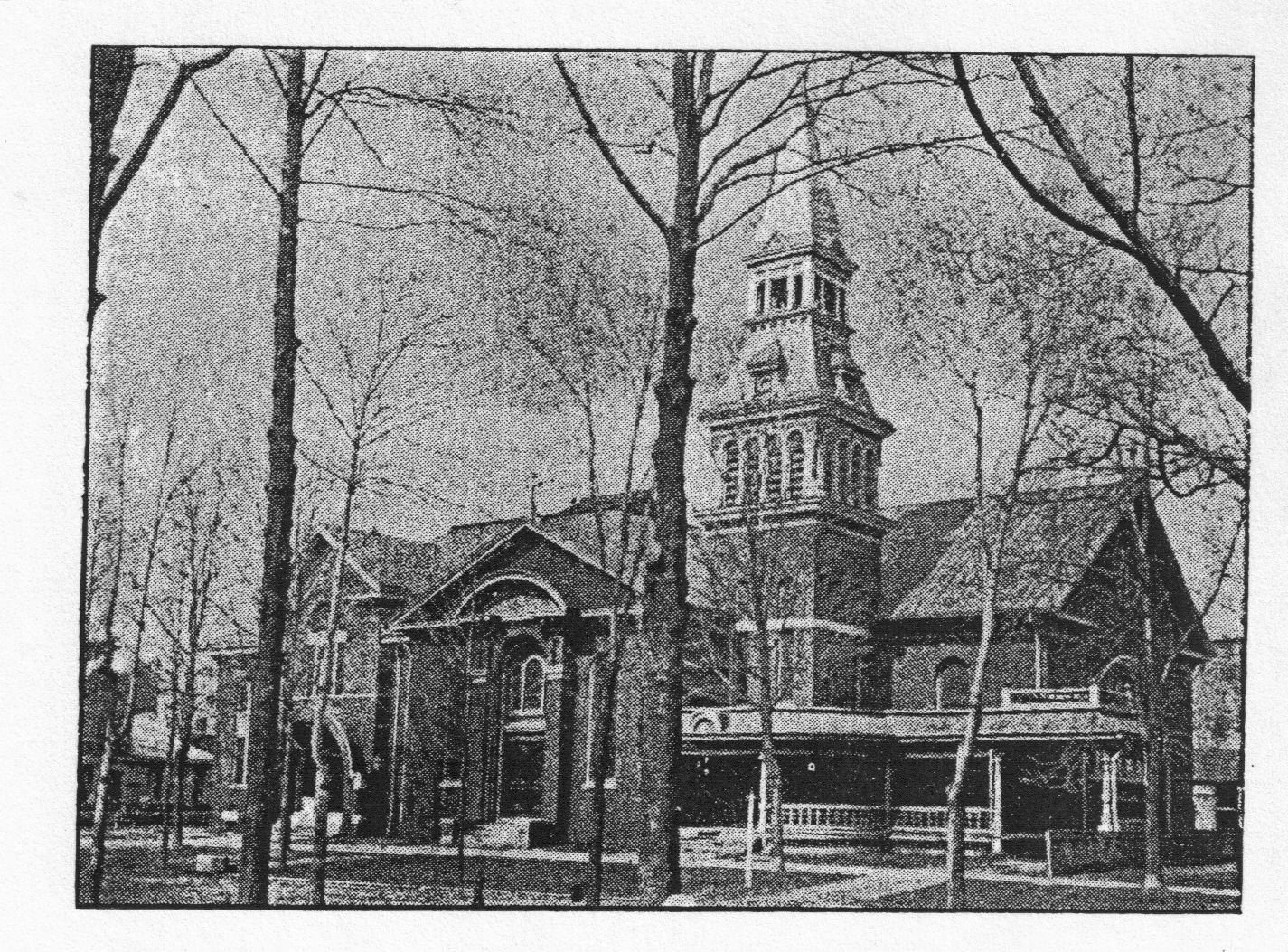 At the meeting on the 19th of November, 1831, John Whitney, Reuben Tooker, Joseph Rickey, John H. Carpenter, Dan Treat (received by letter), and William Foster were appointed a committee to prepare Articles of Faith and Covenant. At a subsequent meeting on the 23d of the same month, the Articles were presented, approved and accepted, when it was "Resolved to call on the following churches for a council to witness our union and to constitute us into Church State, if such council should think it to be expedient, viz.: Church in Dexter, Church in Ypsilanti, Church in Saline, and also to give Elder Tripp, of Sand Lake, an invitation; council to meet in the village of Adrian on the last Saturday of December, 1831." The council met at the stated time. Elder T. Bodley, of Saline, preached the first sermon and extended the hand of fellowship. On the next day, Sunday, January 1st, 1832, Elder Bodley preached at the house of Isaac Dean, from these words: "Who is this that cometh up from the wilderness, leaning upon her Beloved?" On Sunday, January 29th, 1832, after church service, the congregation repaired to the River Raisin, when Elder Bodley baptized eight candidates for membership. In February, 1832, Elder T. Bodley became the first installed minister of the church; John H. Carpenter and John Whitney were the first deacons, and John Whitney the first treasurer. Elder Bodley remained with the church during the year 1833, at a salary of $150.00. The records show that in March, 1834, a call was extended Rev. Mr. Goodman, but we find that in June, 1834, the Rev. Bradbury S. Clay (father of our present well known banker, Frank W. Clay), was installed. It appears the question of the minister's salary occasioned the members some anxiety. There had been considerable delay in raising the last year's expenses of the church, and it was decided to make a levy, and William Foster to make an assessment on the taxable property of the members of the church, that the amount of the Rev. Mr. Clay's salary might be assured. It was voted to raise $200 to pay Mr. Clay for his ministration during the year 1835. In 1837 a brick church was completed and dedicated on the site of the present edifice on Broad street. Rev. Gideon D. Simmons was the pastor during the construction of the first church. A large and fine toned bell was soon after hung in the tower. It was first swung between two stumps in front of the church, where the village gamin insisted on trying its tones. About the year 1855 the first chapel was built. The present chapel was dedicated January 1st, 1900, and cost $7,372.28. The annex and audience room was constructed in its present form in 1884-5, during the pastorate of Rev. J. S. Holmes, at a cost of about $12,000. The present pastor, Rev. Franklin Wait Sweet, was installed October 3d, 1902. The present Board of Trustees consists of the following gentlemen: E. L. Baker, president; John E. Carr, secretary; George W. Ayres, C. B. Bennett, Frank Cantrick, C. C. Fisher, D. B. Morgan. The Sunday school was organized soon after the church was founded, and in 1834 Lauren Hotchkiss was its superintendent. The Hon. William S. Wilcox became superintendent in the fall of 1839, and served continually in that capacity until the spring of 1891, a period of over fifty-one years. Since the resignation of Mr. Wilcox, D. B. Morgan and George L. Bennett have served as superintendents, the latter still being in that position. Mr. Bennett is assisted by the following associate superintendents: D. B. Morgan, B. P. Hathaway and Mrs. E. L. Baker. E. L. Baker, jr., is the secretary and treasurer. The membership is about 625, with thirty teachers. There is a Sunday school board of twelve members to who all questions are referred. On the basis of average attendance, which for the first six months in 1903 was 425, this is one of the largest Sunday schools in Michigan. 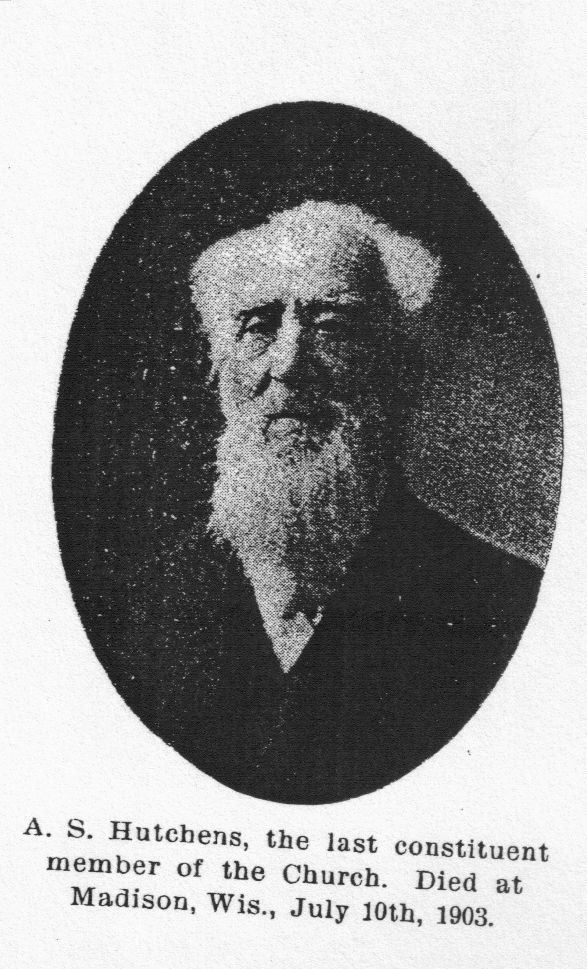 Below will be found extracts from a letter written by Allen S. Hutchens, a constituent member, on the occasion of the semi-centennial of the church in 1881. Many facts and incidents of the early settlement will be found in this interesting paper:
Top First Presbyterian Church - Pages 37-39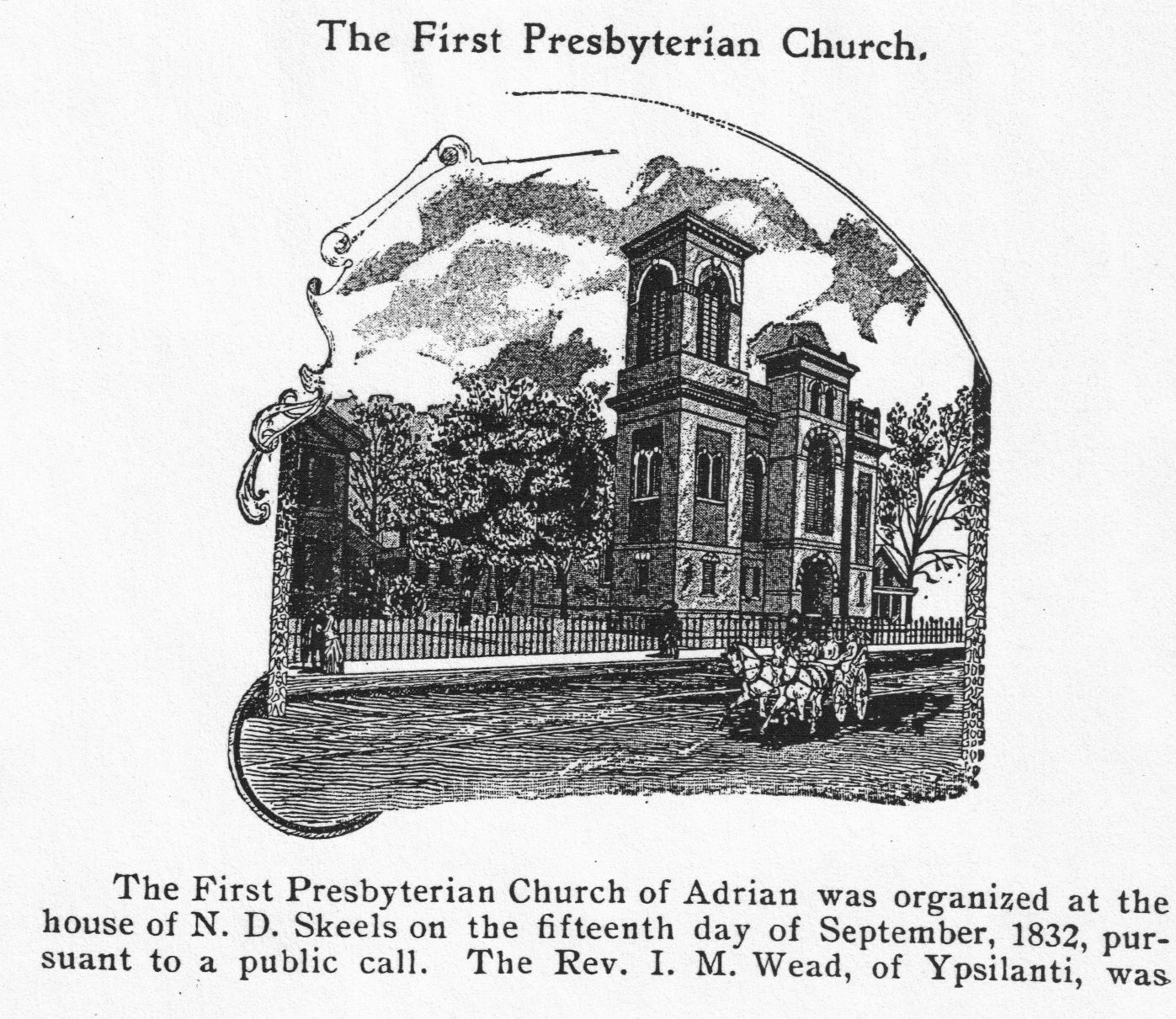 The First Presbyterian Church of Adrian was organized at the house of N. D. Skeels on the fifteenth day of September, 1832, pursuant to a public call. The Rev. I. M. Wead, of Ypsilanti, was present and chosen moderator, and N. D. Skeels, clerk. The moderator presented the Article of Faith and Covenant adopted by the Detroit Presbytery, Sept. 1st, 1831, which were adopted by resolution. The clerk was then ordered to enroll the following names, Josiah Sabin, Patrick Hamilton, Isaac Ormsby, Amelia Ormsby, Elijah Johnson, Elihu Frary, Asahel Finch, Jr., Mary D. Finch, N. D. Skeels, Elizabeth Skeels, Clarissa Fessenden, Mary A. Chapin, Elizabeth Beals, Huldah Brown. There seems to have been a strong temperance sentiment existing at that time, for we find in the minutes of the first meeting the following: Three elders were then elected, as follows: Elijah Johnson, A. Finch, Jr., Josiah Sabin. The first baptism was the little daughter of Asahel and Mary D. Finch, Elizabeth Mary. In November, 1832, the Rev. George Howell came to Adrian. The minutes show the next minister to visit the village was the Rev. A. S. Wells, in 1834, who was followed the same year by Rev. E. Gregory, who remained during the winter of 1834-5. In the fall of 1835, the Rev. William Wolcott came, and served as supply during 1835-6. The church has had eight installed pastors, as follows: 1837-42, Rev. J. L. Tomlinson; 1844-61, Rev. George C. Curtis; 1861-65, Rev. George Duffield, Jr.; 1865-74, Rev. Wm. H. Webb; 1876-80, Rev. John C. Hill; 1881-85, Joseph B. Little; 1886-98, Rev. Willard K. Spencer; 1898, and still in charge, Rev. Edward M. McMillin. The first church building was erected by the society on Church street, in November, 1832, being the first church edifice built in the village. In 1842 a new structure was built on the present site, on East Maumee street, at an expense of $12,000. This was enlarged in 1854 at an expense of $5,000, and again in 1869-70 was largely rebuilt and beautified, at a cost of $25,000. The church bell, weighing 1,601 pounds, and costing $478, was hung Dec. 31st, 1846. The chapel was built in 1884, at a cost of $5,000. The fine parsonage, No. 35 Dennis street, was built by the Samuel E. Hart estate, in 1895, and was first occupied by the Rev. W. K. Spencer. The Sunday school is in a flourishing condition, and since 1850 has been a power for good and active church work. The officers are: Superintendent, S. S. Withington; First Assistant, H. M. Judge; Second Assistant, Miss Della Corbus; Third Assistant, Miss Ida Park; Secretary, Miss Florence Clement; Assistant Secretary, Norman Angell; Treasurer, Miss Helen Jewell; Superintendent of Primary Department, Miss Alice Angell; Assistant, Miss Carrie Culver. The enrollment is about 350 scholars, with an average attendance of about 225. Top Christ Episcopal Church - Pages 39-40One of the handsomest and most substantial church edifices in Adrian is Christ Episcopal Church. This church was organized in 1838 by the Rev. David J. Burger, who remained here for one year. 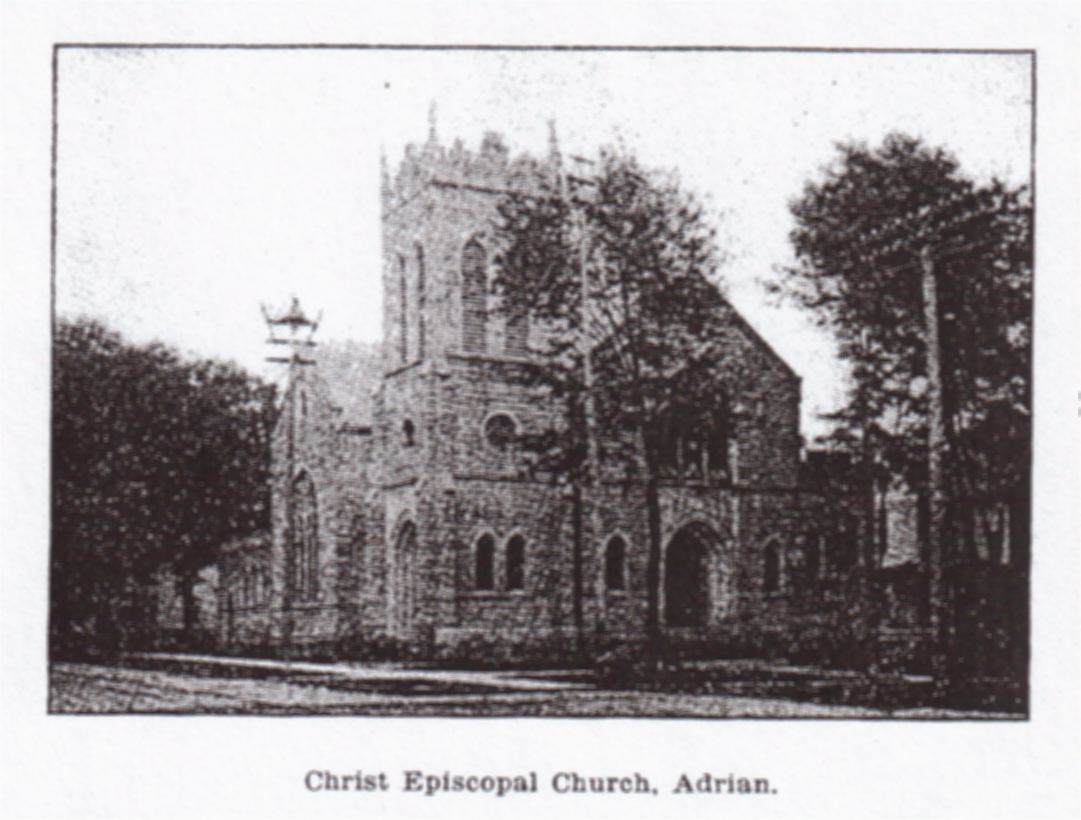
In 1839 Rev. Wm. N. Lyster, of Sand Lake, took temporary charge, and often visited the parish until 1840. In 1841 Bishop McCoskry administered the Apostolic Rite of Confirmation in the Methodist Church, on Toledo street, the congregation kindly tendering their house of worship for that purpose. About this time the old Presbyterian structure on Church street was secured, the Presbyterian Society having erected a new edifice on Maumee street, and the Rev. Sabin Hough was appointed rector. No records can be found (it is believed they were burned in the old court house in 1852), but it is known that services were held during the first ten years, and that the Revs. David J. Burger, Wm. N. Lyster, Donald Frazer, Charles V. Kelley and Richard S. Adams were in charge. The first church edifice was erected in 1851. The building committee was James J. Newell and Henry Hart, and the contractors were Daniel A. Loomis and Robert J. Bradley, builders, the architect being F. J. Scott. The cost of the building was $4,282. This was done under the rectorship of the Rev. Rufus Murray, and the church was consecrated by Bishop McCoskry, Oct. 31st, 1852. Since that time, 46 years, the church was at various times improved and enlarged, and was used until Sunday, August 9, 1897, when a special service was conducted by the rector, Rev. C. H. I. Channer, whose sermon contained many interesting historical references. The old building was then removed and the corner stone of the present handsome sanctuary was laid September 28th, 1897. The first service was held in the new church on Easter Sunday, 1898. Following were the church officers at that time: Rector, Rev. C. H. I. Channer; Wardens, Richard A. Bury and H. V. C. Hart; Vestrymen, A. W. Carey, E. E. Marble, W. F. Ayers, H. L. Larwill, C. D. Hardy, C. Short, R. Alfred Bury. The building committee consisted of R. A. Bury, H. V. C. Hart, A. W. Carey, H. L. Larwill, E. E. Marble. The architects were Spier & Rohn, of Detroit, and the contractor was Samuel Pickles, of Jackson, Mich. The cost, with all its furnishings, was $25,000. The handsome rectory on the corner of Church and Locust streets was built with money donated by Mrs. Mary L. Drew, relict of the well known pioneer resident, Delos Drew. The house was built in 1899, at a cost of something over $4,000. Mrs. Drew died before its completion. Top Methodist Protestant Church - Page 40The College Church, afterwards known as the First Methodist Protestant Church of Adrian, was first organized April 14th, 1867, with 46 members. The first trustees appointed were: Dr. J. Kost, J. H. Bailey, D. G. Edmiston. Stewards: J. S. Wilcox, J. H. David, J. R. Gilkey. Leaders: A. H. Marsh, G. B. McElroy. Following are the names of the first ministers: J. M. Mayall, Asa Mahan, G. B. McElroy, John Kost, J. S. Thrapp, W. M. Goodner. The Licentiates were: C. B. Goodrich, A. R. Seamon, A. H. Marsh, John Ellis and D. G. Edmiston. In August, 1879, the Society leased the old Plymouth church building, and in May, 1880, purchased the property and has worshiped there since that time. The present pastor, Rev. C. W. Stephenson, was installed in September, 1901, and has been engaged for his third year. Board of Trustees at present are: Dr. G. B. McElroy, I. W. Swift, J. N. Sampson, Rev. John Gregory, Charles Clark, Dr. M. R. Morden, V. A. Michener. Board of Stewards: A. E. Metler, Alfred Dobbins, Mrs. Charles Thierman, Mrs. Karnes, Arthur Randall. Secretary, Arthur Randall; Treasurer, Alfred Dobbins; Superintendent of Bible School, H. K. Fox; Superintendent of Primary Sunday School, A. E. Metler. Top St. Mary's Catholic Church - Page 41About the year 1840 a Catholic mission was opened in the village of Adrian by Father Smoulder, who came from Monroe. He came here monthly, and Mass was read in the homes of Patrick Kelley, Chas. Conlisk and Patrick Stanton. Father Kindekens established a church in 1845, and the first edifice was built on the corner of Center and Erie streets.Father Ehrenstrasser came in July, 1865, and remained until September, 1867. Father Van Dyke came in September, 1867, until December, 1871. In December, 1871, Father Duhig came and remained until September, 1873. Then came Father Wallace, in October, 1873, who remained until January, 1894. Dr. Charles O'Reilly, D. D. came in February, 1894, and remained until March, 1901. Father Henry D. Sullivan, the present pastor, came in March, 1901. St. Mary's has a membership of about one thousand, and has a Sunday school of one hundred and fifty scholars. Top St. Joseph's Catholic Church - Pages 42-43The Catholic congregation in Adrian was separated in 1862, when the German Catholics decided to build a place of worship of their own nationality, as they were all German speaking and wished to have a pastor who spoke their own language. From 1862 until 1865 the congregation's spiritual welfare was administered to by the Redemptorist Fathers, who visited here regularly from Detroit, but as they were rapidly growing in numbers it became necessary for a resident pastor, so in 1865, Rev. Father Ehrenstrasser took charge of the rapidly growing congregation and remained here until 1870, but was then relieved and called to a different field of labor. He in turn was succeeded by Father Tewis, who remained here only two years, and in 1872 was succeeded by Rev. Father Kullmann, who did much in behalf of the church and congregation. Under his pastorage the first cemetery was opened, besides several improvements on the church property, but at that time it was very evident that the church was not large enough for the greatly increased congregation, and the building of a larger edifice was agitated; but nothing definite was done until the following year, when Rev. Casimir Rohwoski took charge of the congregation, and to him is due the credit of the present beautiful edifice, the school and residence; but his undertaking was great, and he had not fully carried out his plans when he was removed, with a portion of his noble work undone, that is, the completion of the parish residence. But his successor, Rev. Theisen, finished the work of the residence, and did much in liquidating the debts on the property; he was in charge of the congregation only two years and in turn was succeeded by the Rev. A. P. Ternes, who remained here until 1896, making various improvements on the parish property. Rev. Henry C. Koenig took charge in 1896, and the present pastor, F. W. Schaeper, came in March, 1903. There is a large congregation and Sunday school. Top First M. E. Church - Page 42Following are the names of the pastor and principal officers of the M. E. Church of Adrian, in 1903: 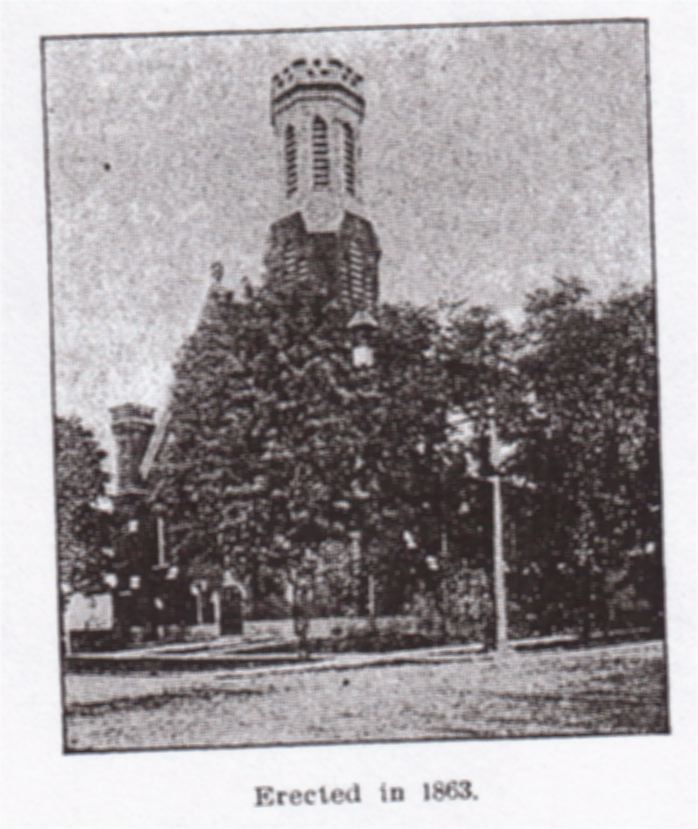
TRUSTEES - G. P. Fuller, President; C. L. Norton, Secretary; E. N. Smith, Treasurer; Wallace Westerman, H. W. Bovee, A. J. Bigelow, P. J. Willson, J. W. Page, Joseph Wesley. STEWARDS - G. O. Green, Oliver Schneerer, A. D. Quick, H. H. Todd, Fred E. Ash, J. J. Stephenson, W. O. Albig, W. J. La Fraugh, Mrs. H. Camburn, Mrs. A. J. Bigelow, Mrs. E. S. Ferguson, Mrs. G. D. Austin. |